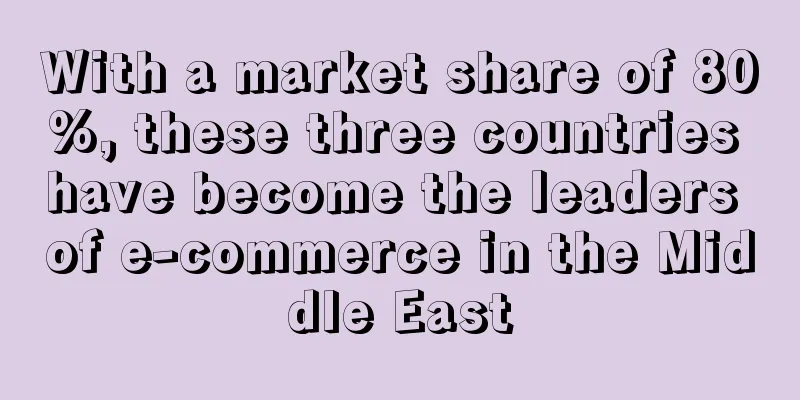With a market share of 80%, these three countries have become the leaders of e-commerce in the Middle East

|
By the end of 2020, the e-commerce market in the Middle East reached $22 billion, driven by online shoppers from Saudi Arabia, Egypt and the UAE. According to the report, Saudi Arabia, Egypt and the UAE account for 80% of the region's entire e-commerce market.
Data shows that by 2024, Saudi Arabia's market size is expected to reach $8.2 billion. But the UAE still has the largest market size. The report said that before the outbreak, the UAE's digital economy contributed 4.3% to the country's gross domestic product (GDP).
In addition, according to the Dubai Future Foundation, the UAE's e-commerce market will reach $62.8 billion by 2023. Dubai is one of the fastest growing cities in the UAE for e-commerce. According to the Dubai Chamber of Commerce and Industry, the size of Dubai's e-commerce market will reach $27 billion by 2022.
In Egypt, according to a previous report by Oxford Business Group, the size of Egypt's e-commerce market will reach US$3 billion by 2022.
These three countries are the main population centers in the Middle East, so it is reasonable that they occupy the main e-commerce market share in the region. Of course, the growth of e-commerce in the Middle East is also inseparable from the increase in investment in e-commerce by various countries, large-scale improvement of infrastructure, and more and more countries supporting online shopping.
Government regulators saw the potential of e-commerce before the pandemic. In 2017, the Dubai Airport Freezone Authority launched an $870 million project to build a free trade zone entirely geared toward e-commerce.
In 2019 , Saudi Arabia passed an e-commerce law aimed at protecting consumers from fraudulent transactions, a move aimed at boosting consumer confidence and stimulating the market.
The Wamda and MIT report notes that these efforts have contributed to the rapid growth of the region’s e-commerce industry, which is expected to grow another 35% this year to $30 billion.
The epidemic is good for e-commerce, but it is not so "friendly" to traditional offline entities. In order not to be overwhelmed by this wave, some offline retailers and supermarkets have begun to seek transformation. For example, Emaar Shopping Center and Majid Al Futtaim have invested heavily in digital construction and cooperated with technology companies to launch their own online shopping platforms. middle East E-commerce |
<<: Sales surged 30%! India's demand for household cleaning products is high amid the pandemic
>>: Poshmark performed poorly after its IPO and launched a video feature to attract sellers
Recommend
What is UNIT808? UNIT808 Review, Features
Unit808 is a cross-border e-commerce platform in S...
Online GMV reaches $18.8 billion, Mexican e-commerce is booming
In 2020, although Mexico's economy was hit ha...
Amazon will automatically verify claims and provide refunds on behalf of sellers
Recently, Amazon UK announced that from December ...
What is Monix? Monix Review, Features
<span data-docs-delta="[[20,{"gallery"...
What is lollyhair? lollyhair Review, Features
Lollyhair is located in Xuchang and is a professio...
As the choice of one quarter of consumers, will the resale market become a hot spot for e-commerce?
Recently, according to foreign media reports, the...
What is HEINZ? HEINZ Review, Features
HEINZ Gets It Right with Heinz No Added Sugar Ket...
What is CrowdTangle Link Checker? CrowdTangle Link Checker Review, Features
The function of this plug-in is to detect the pop...
Another track is hot! Shenzhen sellers won 100 million yuan in financing
As people's living standards improve and thei...
Application for coupons for Japan Asia’s September limited-time sale is now open!
This limited-time promotion will be held from Sep...
What is Conforama? Conforama Review, Features
Founded in 1967, Conforama is the second largest ...
The China-EU Geographical Indications Agreement has officially come into effect. Xuan paper and aged vinegar are going to be popular in Europe!
Just as the three-year Sino-US trade war ushered ...
Walmart has 10 million members
Amazon has its own FBA warehousing service, and u...
China-India bilateral trade reaches US$77.7 billion! China becomes India's largest trading partner
In 2020, the new coronavirus raged around the wor...
Banned products appear on eBay and even appear in promotional ads?!
Following QAnon, more products from nationalist o...









